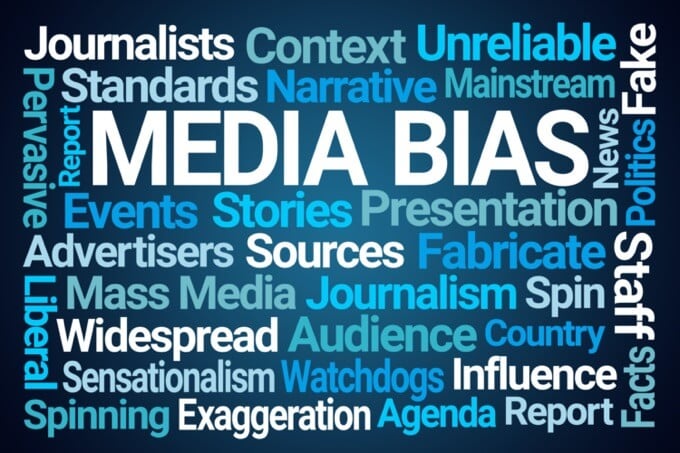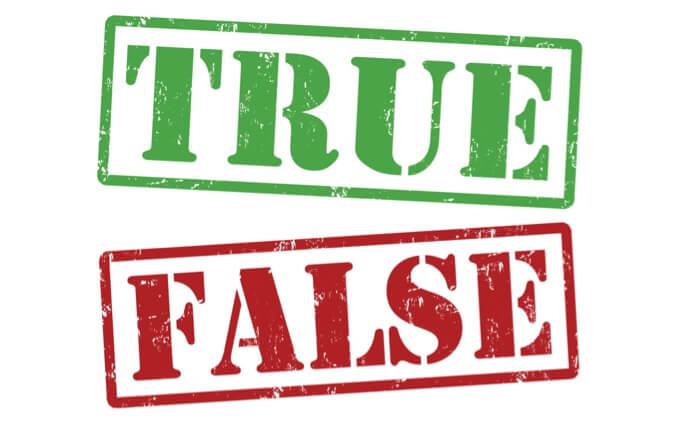They say the truth is out there and that does include the internet. The problem is that the truth is drowned out by the sheer weight of twisted, misleading and outright false information.
The good news is that with some (un)common sense, it’s possible to get a good sense of what’s likely to be true or false on the internet.

Consider The Source
True things are true regardless of who says them, but the likelihood of a trusted, transparent source accurately reporting the facts is much higher than ones with a poor or unknown track record. So initially you can assign more weight to sources of information that are subject to regulation (such as scientific or journalistic boards) and stick to known methodologies of gathering and reporting the news.
Be very wary of random websites with anonymous owners and writers. Such sites can be very popular among a certain type of conspiracy-loving internet user, who will share these links with gusto. If your first contact with a story or information is from such a site, your next step to confirming if something is true or false is to corroborate the information.

Next, Consider Multiple Sources
Even if you regard the first source as being both trustworthy and open, you should look for corroboration of the basic facts from several independent sources.
They’ll provide other angles on the story, additional information and corroborate the sources and reporting of your first source. If multiple independent sources are saying the same thing, the probability of what they say being the truth goes up.
Look For AP-style Coverage
There are many different ways to report a story. The traditional way that journalists are trained to report events and information to the public follows a few basic rules, which include things like:
- Tell the readers “who, what, when, where and how”
- Give the most important facts first and additional facts later in the story
- Report what happened without spin or adding your own opinions
When a story is written from a particular political or ideological view, it begins to stop being news and moves into the editorial realm.

Which brings us to Associated Press or “AP” reporting standards. You can see what the AP mandates here. In short, AP-style stories try to minimize bias and leave the interpretation of key facts up to you. So at the very least it’s worth including the AP version of a story in your total assessment of what’s true and what isn’t.
Videos And Photos Are Not The Truth
We live in an age of advanced photo and video manipulation. Photoshop and deepfake artificial intelligence techniques mean that people spreading misinformation can create all sorts of visual “evidence” that’s partially or completely fabricated.
Which means it’s worth waiting for forensic experts to verify that these media have not been tampered with. Even if a photo or video has not been tampered with, that does not mean it reflects the truth or at least the whole truth.

A photo is just a snapshot in time. It tells you nothing about what happened before or after the photo was taken. You can’t see what’s going on outside the frame and you have no context for the content of the image. All of these things fundamentally change what the image means!
The same goes for video. Videos can be cut in such a way that they align with a certain narrative. Which means you don’t know what happened before or after the clip. You don’t know what happened between cuts in the clip. You also don’t know what happened outside of the frame of the clip. So don’t attach too much weight to either photo or video material by itself.
Review Sources And References
Every story is based on a chain of other reporting until it leads back to the primary source. That is, unless the writer of the story is reporting directly from the primary source! Whenever someone makes a claim or relays events, it’s critically important that you look up the sources they are quoting. Are those sources reliable? Where did they get their information from?

Crucially, does the quoted source actually support the interpretation or conclusion of the original statement that relies on it? By following the chain of references, you can discover where things have been twisted or fabricated.
Apply Basic Critical Thinking
Apart from fact-checking and considering the source of information, you should also try to go through at least a basic critical-thinking process when assessing whether a statement is true or false. What does that involve? Let’s whip out the bullet points and make it easy:

- Ask how reasonable the information is. Extraordinary claims require extraordinary evidence!
- Is the chain of logic unbroken? Is an unwarranted leap of logic made somewhere along the line?
- Are there alternative explanations or conclusions that can be drawn from the facts as presented?
- Is there reasonable doubt that the facts could be wrong? (e.g. unreliable witnesses)
- How feasible is the story as presented?
The point is not to dig out the real truth just from the information you have at hand. It’s to establish how much doubt is reasonable about what you’re actually seeing.
Don’t Use Social Media As Your Source Of News
This is probably the most important thing you can do in order to clean up your stream of information. Social media is highly-susceptible to bias, because it deliberately networks people with similar views together. You aren’t getting a feed of opinions and stories that reflect an average or varied set of views.

While it’s perfectly fine to catch wind of something important via social media, it’s not a great idea to look for confirmation or raw facts there. You’re much better off stepping outside of social media and doing your fact finding elsewhere instead.
Apply These Tips Selectively
We hope the advice in this article will help you believe bad information less often and let you identify good information with more confidence. However, it’s obviously impossible to scrutinize each and every bit of information that comes your way each day to this level. You’d never have time to do anything else. Of course, you can always turn to fact-checking sites such as Snopes for most things as well, but even these sites can get it wrong.
So what are you supposed to do then? We suggest that you only apply deep scrutiny to stories and information that matter. That can either mean that they matter to you personally or that they matter in a more universal sense.

Did that celebrity really throw a drink in someone’s face? It probably doesn’t matter. This isn’t an important claim. However, if someone is touting an unproven and untested cure for cancer, that’s very much something to investigate carefully.
You have to apply a sort of “topic triage” to things and decide which things are too trivial or too irrelevant to you to wrestle with. That being said, don’t pass on information you aren’t very sure about to other people, because it might be relevant or important to them and can even lead to harm if they aren’t critical about it and end up believing it.
Defining whether a claim is true or false can be hard and there’s no such thing as absolute accuracy, but by applying the most basic of filters, you can get 90% there.